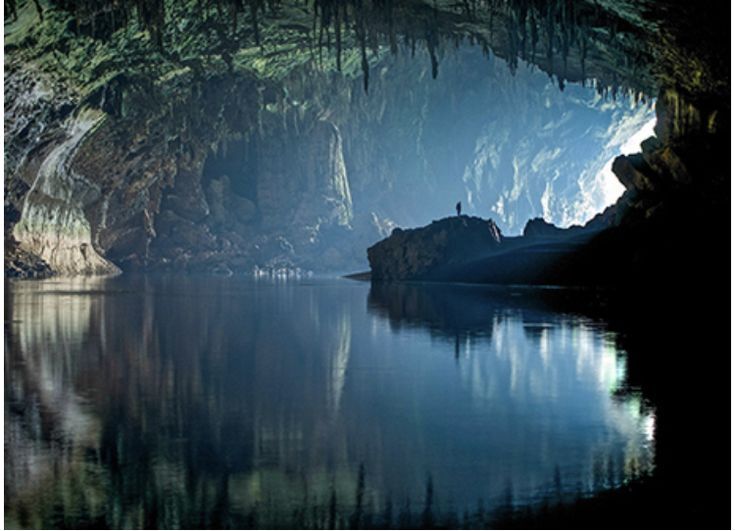Introduction
Son Doong Cave is in the heart of Vietnam’s Phong Nha-Ke Bang National Park. It is a natural wonder that has captivated the world. As the largest cave on the planet. It is a true marvel of nature, with its immense size, stunning formations, and unique ecosystem. In this blog, we’ll delve into the fascinating details of this incredible cave. We also uncover why it has become a must-visit destination for adventurers and nature enthusiasts alike.
The Discovery of Son Doong
The story of Son Doong’s discovery is as remarkable as the cave itself. In 1990, a local man named Ho Khanh stumbled upon the cave’s entrance. While he searched for the rare and valuable agarwood in the dense jungle. With the sound of a roaring river emanating from the cave, Ho Khanh made a mental note of the location.

It wasn’t until 2009 that the British-Vietnamese Cave Expedition Team followed up on Ho Khanh’s account and set out to explore the mysterious cave. With the help of Ho Khanh, the team finally located the entrance and began their groundbreaking expedition.
The Sheer Size of Son Doong
The first thing that strikes visitors to Son Doong is its sheer size. Measuring nearly 9 kilometres in length and with a volume of 38.5 million cubic meters. This cave is an absolute behemoth. To put its size into perspective, the cave is large enough to accommodate a New York City block.

Son Doong’s massive dimensions make it the largest known cave in the world, surpassing the previous record holder, Deer Cave in Malaysia, by a significant margin. The cave’s main passage is so vast that it could easily fit a Boeing 747 aircraft, with room to spare.
Unique Features and Ecosystems
Beyond its staggering size, Son Doong is also famous for its unique features and ecosystems. The cave is home to towering stalagmites, some reaching over 80 meters in height, as well as a lush, primaeval rainforest that has developed within its cavernous interior.
Remarkably, Son Doong even has its own weather system, with clouds and mist forming within the cave’s vast spaces. This creates a truly otherworldly atmosphere, with the mist and clouds adding an ethereal quality to the already breathtaking scenery.

The cave’s ecosystem is equally fascinating, with a diverse array of flora and fauna in the unique underground environment. Explorers have discovered a range of species, including cave-dwelling fish, insects, and even a species of primate, the Hmong Langur, which is found nowhere else on Earth.
Challenges and Exploration
Exploring Son Doong is no easy feat. The cave’s remote location, rugged terrain, and challenging conditions make it accessible only to the most experienced and well-equipped adventurers.
The expedition to Son Doong requires a team of over 25 porters, safety advisors, and guides, who work tirelessly to ensure the safety and comfort of the visitors. Trekking through the jungle, climbing the “Great Wall of Vietnam,” and navigating the cave’s treacherous passages are all part of the adventure.
Despite the challenges, the rewards of exploring Son Doong are immense. Visitors are treated to a truly unique and awe-inspiring experience, with the opportunity to witness the grandeur of the world’s largest cave and its remarkable ecosystems.
Conclusion
Son Doong Cave is a natural wonder that defies the imagination. From its staggering size to its unique features and ecosystems, this cave is a testament to the incredible power and beauty of the natural world. As more people discover the wonders of Son Doong, we must work to protect and preserve this incredible natural treasure for generations to come.














